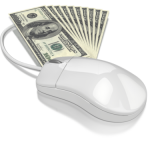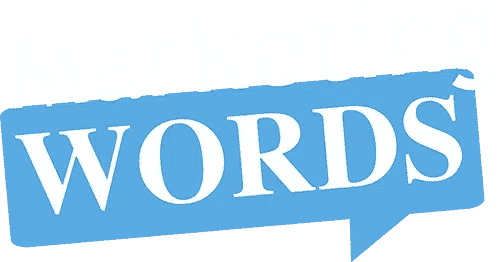By Karon Thackston. © All Rights Reserved
 It’s a common mistake that almost every pay-per-click (PPC) advertiser makes. Assuming that one clickthrough is as good as the next could be costing you sales while also hiking up your advertising budget. Never really given the matter much thought? You should, for one paramount reason: quality clickthroughs convert better than generic clickthroughs.
It’s a common mistake that almost every pay-per-click (PPC) advertiser makes. Assuming that one clickthrough is as good as the next could be costing you sales while also hiking up your advertising budget. Never really given the matter much thought? You should, for one paramount reason: quality clickthroughs convert better than generic clickthroughs.
Relevancy is king in PPC. The more general the keyphrases, the higher your tendency to attract tire kickers. One reason for this may be because people typically begin their online searches using general terms that grow more specific as they determine precisely what they want. This follows the logical progression of an average buying process.
When people start a search for a product or service, they have already recognized a need and have entered the information-gathering stage of the buying process. They are attempting to survey the marketplace to see precisely what they want. As they progress, they clearly define what they’ve decided to purchase. Lastly, they shop for the best price, most convenient location or other determining factors for making their buying decision.
Although variations occur throughout the process, most searches and purchases follow this basic format. In PPC copywriting, there are two traits you can include that will help you attract those who are ready and most qualified to buy.
Relevant Keywords Deliver More Qualified Clicks
Countless advertisers have shown that the more specific the keywords and landing page, the higher the tendency of the site visitor to convert. This is not a principle that’s exclusive to PPC. Long-tail keywords (those which are highly descriptive such as [long sleeve white men’s dress shirt]) in organic search results convert better when they direct surfers to a particular page about those types of shirts. Conversely, generic keywords such as [men’s shirts] that point to a home page have extremely low conversion rates. The same holds true in PPC.
It’s easy to see the difference between the following keyphrases:
-
boy’s jackets boy’s Levi’s denim jackets stepladder heavy duty aluminum stepladder attorney elder care attorney in Manhattan, NY
What does keyword research have to do with PPC copywriting? Everything! Obviously, the keywords will determine the general subject matter of the ads. Also, from as far back as the days of Overture.com, it’s been noted that PPC ads which contain keywords in the headlines receive higher clickthrough rates than those that don’t. When you write your ads, make every effort to use keywords in the headline copy.
If your goal is to get the highest clickthrough rate (CTR) possible, general keyphrases are more likely to deliver. However, if you hope to receive more qualified clicks that have a greater tendency to convert to sales, choose more specific search terms to target.
Negative Copy Boosts Qualified Clickthroughs
Sounds odd, doesn’t it? “Negative” copy? Who would want to use that? This form of PPC copywriting is sometimes called “filtered” copy because it can filter out unqualified or lesser-qualified searchers by eliciting a negative reaction.
The idea is to offer details in your copy that would cause someone to potentially think, no, if _____ is the case, I don’t want this. You save money because you’ve prequalified the prospect before they clicked your paid ad.
Elements that make good filters/negative language include:
- locations
- dates
- prices
- colors
- sizes
You can also combine several elements of negative language in a single ad. For instance, if writing copy to sell a cruise vacation, consider one of these alternatives. Here’s a typical example of an ad written to bring in the most clicks:
Exciting Mexico Cruises
Cruise Mexico this winter. Three
popular cities in 1 special tour.
www.abcxyz.com
These 5 Words Can Make or Break Your Marketing Results
Ready for more clicks, increased engagement & better results from all your marketing? It's time to beef up your short copy. Discover 5 words that add power & persuasion to headlines, titles, subject lines, bullets, calls-to-action and more.

I understand that I will also receive weekly articles & videos plus periodic discounts, product notices & more. I can unsubscribe at any time.
There’s nothing wrong with that ad. It would certainly be worth testing. In fact, chances are it would receive a high number of clickthroughs. But, would it prequalify visitors to your site? No.
Because of the vague language of the ad, searchers would have to click to your landing page to get details. Once there, they might discover that the cruise:
- is 14 days long
- departs only from New York City
- returns the day after Christmas
- visits cities they’ve already been to
- costs too much
In any of those cases, you’ve paid for someone to click your ad that stood no chance of actually booking a cruise. A true waste of money. What’s a better choice?
14 Day Mexico Cruise 12/5
Tour tropical Cozumel, Puerto
Vallarta & more. Depart NYC $2500pp
www.abcxyz.com
Before the prospect ever gets to your landing page, they must already:
- be available on the specified dates
- want to go to the cities listed
- be able to depart from New York
- be able/willing to spend $2500 per person
Now that’s a qualified site visitor!
How Will This Affect Quality Score?
But wait a minute!, you might be thinking. Isn’t reducing the number of clickthroughs to my site going to also reduce my Quality Score in Google? No necessarily.
In their AdWords Blog, Google states, “Our system evaluates an ad’s quality each time it matches a search query. This way, AdWords will use the most accurate, specific, and up-to-date performance information when determining whether an ad should be displayed. Your ads will be more likely to show when they’re relevant and less likely to show when they’re not. This means that Google users are apt to see better ads while you, as an advertiser, should receive leads which are more highly qualified.”
In the blink of an eye, Google will assess all the factors associated with its Quality Score in comparison to each and every search query. Google will evaluate your:
- keyword relevance
- landing page relevance
- landing page load time
- ad text relevance
- clickthrough rate
As you can see, clickthrough rate is still an issue. The fact that Google indicates that leads should be more highly qualified as a result of the Quality Score calculation is an indication that relevancy will be rewarded. But, even if your Quality Score should fall slightly, would that be so bad? You’d need to test that and see for yourself.
AdWords isn’t the only PPC platform you can use. Facebook is becoming more popular by the day. Regardless of which you choose, in many instances, it’s less expensive and more profitable to pay more per click for highly targeted leads that convert quickly than to pay less per click for generic leads that may never convert. Obviously, it will greatly depend on the cost of ads in your particular PPC campaigns.
Elevated CTRs are certainly a good indicator that your ads are pulling in arbitrary clicks. Is that really the end result you’re hoping for? Remember, not all clicks improve your bottom line. The next time you evaluate your PPC copy, don’t get too elated just because you see a high percentage in your CTR column. After all, while clickthroughs are exciting, qualified clickthroughs are profitable!
If you didn’t realize there was this much to PPC copywriting, you’ll be amazed at the tips and tricks you’ll find in my “Profit-Pulling PPC Ads: How to Write Facebook & AdWords Ads That Get Clicked.” It’s new and it’s on sale now!
If you found this post valuable, others might, too. Please share (below) on your favorite social media sites. Thanks!



Karen..I like your examples. I just started reading The Ultimate Guide To Google AdWords (a Christmas present from one of my daughters) and gotta say I’m learning a lot. Do you have any tips on finding negative kws (apart from what you mentioned in the article)? I need to improve my client’s CTR.
Hi Herman. In order to research negative keywords, you’d have to know what you don’t want included. Usually you find that in the course of the normal research process. (At least, that’s where I find it.) As I see terms that don’t apply, I make notes.
A broad search for “shoes” leads to keyphrases about ladies shoes, men’s shoes, children’s shoes, etc. If you only carry shoes for women, you’d want men’s and children’s on your negative list. Then you go further into the ladies category. Do you want to keep “women’s shoes” or “dress shoes” or “flats?” If not, add them to the negative list.
As you analyze the results from your research, you’re constantly weeding out what’s not precisely relevant.
Thanks for your explanation Karen..follow-up question..
if the womens shoes ad group includes keyword phrases “womens shoes”, “shoes for women”, should you add these kw phrases as negative kws to the mens shoes ad group (mens shoes, shoes for men) to improve CTR?
If they are bringing you clicks you do not want/can’t convert, yes… add them to the negative list. You just have to watch and see which phrases are performing and weed out the rest.
Often people that are brainstorming keywords forget to examine the long tail keyword options fully. It makes absolute sense that the more information that you put into a PPC ad the more likely it is that the click-throughs are actually interested in purchasing your product. In many ways we need to look at PPC ads in the same way as we once looked at newspaper classified ads where it was vital to get all of the details into a limited amount of copy. Finding the copy that works is really a process of trial and error but it is worth it in the long run.
Not sure what you’re classifying as “more” information. All PPC copy has a finite amount of space in character limitations so you can’t put “more” copy in to a PPC ad, per se. That’s not what this article is suggesting. It is describing the process of finding the triggers to entice certain people to click while weeding out those who would simply waste your money. And yes, it makes perfect sense to do this with PPC ads considering that’s what copywriters do (or should do) with every form of copy they write regardless of the platform/medium. This process works beautifully as I (and many other copywriters) have seen from personal experience through out clients’ PPC campaigns successes.